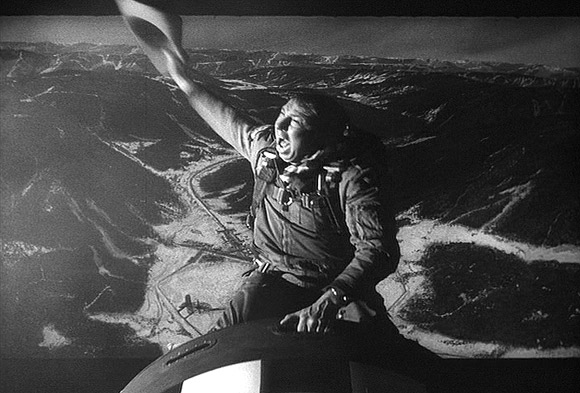By John Pilger
I watched Dr. Strangelove the other day. I have seen it perhaps a dozen times; it makes sense of senseless news. When Major T.J. ‘King’ Kong goes “toe to toe with the Rooskies” and flies his rogue B52 nuclear bomber to a target in Russia, it’s left to General ‘Buck’ Turgidson to reassure the President. Strike first, says the general, and “you got no more than 10 to 20 million killed, tops.”
President Merkin Muffley: “I will not go down in history as the greatest mass-murderer since Adolf Hitler.”
General Turgidson: “Perhaps it might be better, Mr. President, if you were more concerned with the American people than with your image in the history books.”
The genius of Stanley Kubrick’s film is that it accurately represents the cold war’s lunacy and dangers. Most of the characters are based on real people and real maniacs. There is no equivalent to Strangelove today, because popular culture is directed almost entirely at our interior lives, as if identity is the moral zeitgeist and true satire is redundant; yet the dangers are the same. The nuclear clock has remained at five minutes to midnight; the same false flags are hoisted above the same targets by the same “invisible government”, as Edward Bernays, the inventor of public relations, described modern propaganda.
In 1964, the year Strangelove was made, “the missile gap” was the false flag. In order to build more and bigger nuclear weapons and pursue an undeclared policy of domination, President John Kennedy approved the CIA’s propaganda that the Soviet Union was well ahead of the US in the production of Intercontinental Ballistic Missiles. This filled front pages as the “Russian threat”. In fact, the Americans were so far ahead in the production of ICBMs, the Russians never approached them. The cold war was based largely on this lie.
Since the collapse of the Soviet Union, the US has ringed Russia with military bases, nuclear warplanes and missiles as part of its “Nato Enlargement Project”. Reneging a US promise to Soviet President Mikhail Gorbachev in 1990 that Nato would not expand “one inch to the east”, Nato has all but taken over eastern Europe. In the former Soviet Caucuses, Nato’s military build-up is the most extensive since the second world war.


